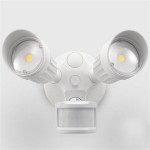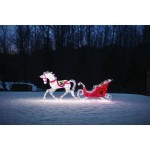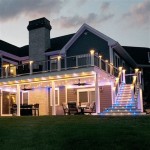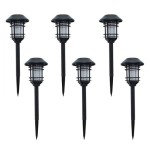Lights to Keep Outdoor Plants Warm
As temperatures drop and the nights grow longer, many outdoor plants struggle to survive the cold. While some plants are hardy and can withstand frost and freezing temperatures, others are more delicate and require additional protection to thrive during the winter months. One effective way to keep outdoor plants warm is by using supplemental lighting. This article will delve into the science behind using lights to provide warmth for plants and explore practical tips for optimizing the use of these lights.
How Do Lights Keep Plants Warm?
The primary way lights keep plants warm is through a process called
radiant heating
. Radiant heat is a form of energy that travels in waves and is absorbed by objects in its path. When lights are placed near plants, they emit radiant heat that warms the surrounding air and the plants themselves. The amount of heat generated depends on the type of light, its wattage, and the distance between the light and the plant.Types of Lights for Warming Plants
Various types of lights can be used for warming outdoor plants, each with its own advantages and disadvantages:
Incandescent Lights
Incandescent lights are a classic choice for providing warmth, known for their affordability and ease of use. However, they emit a significant amount of heat, which can be beneficial in cold weather but also pose a fire hazard if not used cautiously. They also have a shorter lifespan compared to other lighting options.
Halogen Lights
Halogen lights are similar to incandescent lights but offer brighter light and greater efficiency. They also produce more heat than incandescent lights, making them suitable for warming larger plants or areas with colder temperatures.
LED Lights
LED lights, while initially more expensive, are highly energy-efficient and have a longer lifespan than incandescent or halogen lights. They emit less heat than traditional bulbs, making them a safer option in enclosed spaces. While LED lights are not as effective at directly warming plants as incandescent or halogen lights, some models are specifically designed for growing purposes and emit heat that can help with temperature regulation.
Heat Lamps
Heat lamps are designed specifically for providing heat and are commonly used for warming animals or providing therapeutic heat for humans. These lamps emit infrared radiation, which is absorbed by objects and converted into heat. Heat lamps are effective for warming plants, especially those with delicate leaves or stems that are sensitive to frost.
Factors to Consider When Using Lights
To ensure effective warming and prevent potential harm to your plants, consider the following factors when using lights:
Light Intensity
The intensity of light affects the amount of heat produced. A higher wattage bulb generates more heat, which is advantageous in colder conditions but can also be detrimental if placed too close to the plants.
Distance
The distance between the light source and the plants is crucial. Place lights too close, and the plants could overheat or suffer damage. Maintain a sufficient distance to ensure even heat distribution.
Timer
Using a timer to regulate the lighting schedule can prevent overheating during the day and conserve energy. Consider the plants' specific needs and the ambient temperature when setting the timer.
Plant Sensitivity
Different plants have varying tolerances for heat. Some plants thrive in warmer temperatures, while others are sensitive to high heat. Experiment with different lighting setups and monitor the plant's response to determine the optimal temperature.
Safety Precautions
Using lights to keep outdoor plants warm comes with safety considerations:
Fire Hazard
Incandescent and halogen lights generate significant heat and pose a fire hazard if placed too close to flammable materials or left unattended. Exercise caution when using these lights, ensuring they are safely positioned and never left unmonitored.
Electrical Safety
Ensure all electrical connections are secure and free from damage. Use extension cords or outlets rated for outdoor use. Avoid using electrical lights in wet or icy conditions.
Plant Damage
Excessive heat can damage plants. Monitor the plant's response to the light, and adjust the distance or duration of exposure if necessary. Excessive light can also lead to leaf scorch or other damage.
Using supplementary lighting can be an effective method for keeping outdoor plants warm during the cold winter months. By following the guidelines outlined in this article, you can ensure that your plants receive the optimal amount of warmth and light to thrive even when temperatures drop.

The 3 Best Smart Outdoor Lights For Backyards Of 2024 Reviews By Wirecutter

Lights

Glintoper Solar Lights 2 Pack Outdoor Decorative Sunflower 30 Inch Wat
Smart Solar Firefly String Lights 50 Leds Warm White Very Co

This Is The Best Wattage For Outdoor Lights Around Homes

The 2 Best Outdoor Patio Heaters Of 2024 Reviews By Wirecutter

Artificial Light The Essential Tool To Keep Your Plants Healthy In Winter

The Right Outdoor Lighting Will Keep Party Going All Night Daily Telegraph

5 Best Outdoor Solar Lights Of 2024 Reviewed

Waterproof Solar Garden Lights Starburst Swaying Light When Wind Blows Outdoor Decorative Warm White 2 Pcs Com
Related Posts







